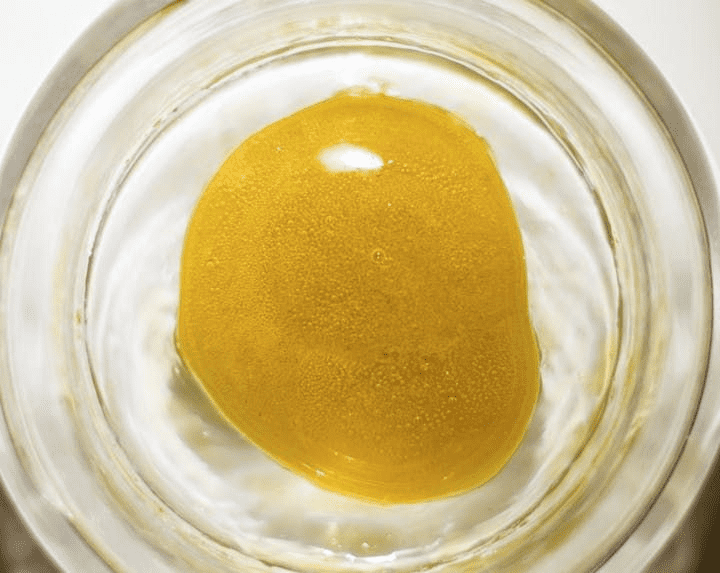When most people hear 'medical marijuana', they think about flowers or bud that are smoked. But cannabis comes in a variety of forms, including concentrated extracts that can be taken in lots of different ways.
Cannabis extracts are growing in popularity, comprising between 30 and 60 percent of legal market sales in states that have legislation regulating marijuana. The names for these extracts -- oil, wax and shatter -- refer to the texture and consistency of the concentrate. Here's an explanation about these cannabis extracts and a guide to the differences between them.
Cannabis Concentration
The cannabis plant contains hundreds of compounds, including cannabinoids, which are the chemicals responsible for the plant's psychoactive and medicinal properties. About 85 cannabinoids have been identified in cannabis, but the most common and most frequently studied are Δ9-tetrahydrocannabinol (THC) and cannabidiol (CBD). THC is the primary psychoactive component in cannabis and is associated with such medicinal effects as pain control, mood stabilization, sleep improvement, appetite enhancement and inflammation reduction. It has been approved in a number of countries to treat spasticity in patients with multiple sclerosis, and it has been associated with improvements in patients with asthma. CBD has been shown to reduce nausea and vomiting, suppress seizures, reduce inflammation, enhance moods and reduce pain.
The percent of active cannabinoids, referred to as potency, varies from plant to plant and is dependent on such variables as climate, temperature, humidity and soil conditions for the growing plant. Plants grown indoors under controlled conditions usually have higher potency than plants grown outdoors. Potency is measured as the percent of active cannabinoids per dry weight of material. For example, average THC concentration in cannabis varies between 1 and 20 percent. Extracting the cannabinoids from the plant increases that potency to between 40 and 80 percent.
The benefits of increased potency means that patients need less product to achieve the medical results needed.
Extracting Cannabinoids
Cannabinoids are extracted from the plant by use of a solvent. Common solvents include:
- Butane
- Isopropyl alcohol
- Carbon dioxide
- Ethanol
- Water/steam
- Hydrocarbons
- Propane
The plant material, usually consisting of the buds, flowers, stems and leaves, is soaked in the solvent and then strained. This process is usually repeated. The resulting liquid is then heated in a vacuum oven to remove the solvent. The remaining resin is cannabis concentrate.
It is estimated that it takes about one ounce of marijuana plant to make six grams of cannabis oil, or that it takes about five pounds of plant to get 120 to 140 grams of extract.
Although the process for extracting cannabinoids can be done at home, and there are many web sites that explain the process, there are risks. One risk is the very real danger caused by improper ventilation and the heating of potentially flammable solvents, such as butane. In 2014, Colorado reported 32 home explosions that were confirmed as being caused by cannabis extractions. As a result, the state passed legislation in 2015 restricting the use of hazardous materials in the extraction process for non-licensed manufacturers of cannabis extracts.
A second problem is control of contaminants. Some solvent may remain in the resin despite the heating process, and the extraction process may not remove contaminants, such as pesticides, that are used in the growing process. For instance, Washington State, which legalized recreational marijuana in 2014, tests product regularly for salmonella, E. Coli, and other contaminants, and rejected about 13 percent of the marijuana produced in the state in 2014.
The third problem is consistent potency. Do-it-yourself production does not necessarily have quality control over the potency of your product. If your recommendation for medical marijuana requires a specific potency level, you may be better off relying on a pharmaceutically prepared extract.
Texture & Consistency of Cannabis Extracts
The texture and consistency of the cannabis extract is what gives the extract its name. Texture can be affected by the temperature of the heating process, the amount of moisture in the plant material and any agitation or stirring that occurs prior to the purging phase (removal of the solvent). Extract that appears as a thick, sticky resinous liquid is called cannabis oil. Cannabis oil is sometimes called honey oil due to its gold color, or butane oil in reference to the most commonly used solvent.
Extract that is thick and opaque is referred to as wax due to its similarity to beeswax or earwax. Cannabis wax results from crystallization caused by agitation either through stirring or rapid heating. Wax can vary in texture from a somewhat thick liquid to candle wax.
Shatter is more brittle and clear, and is almost glasslike in appearance. When heated, it can be pliable, but it can also break easily when it is cooled, hence the name.
Patients who use cannabis extract for treatment often employ vaporization or dabbing. These methods heat the cannabis to a temperature lower than that of smoking, creating a mist or vapor that can be inhaled. This makes it ideal for patients who are experiencing nausea or who cannot or do not wish inhale smoke. Cannabis oils also can be taken orally via a capsule, an oral syringe or as drops under the tongue. If prepared with an edible solvent, such as olive oil or butter, it can be used in cooking and preparing cannabis edibles.
The potency and effects of the various forms of cannabis extract are similar across the products. The type recommended for patients will depend on their condition, symptoms and their provider's recommendations.
